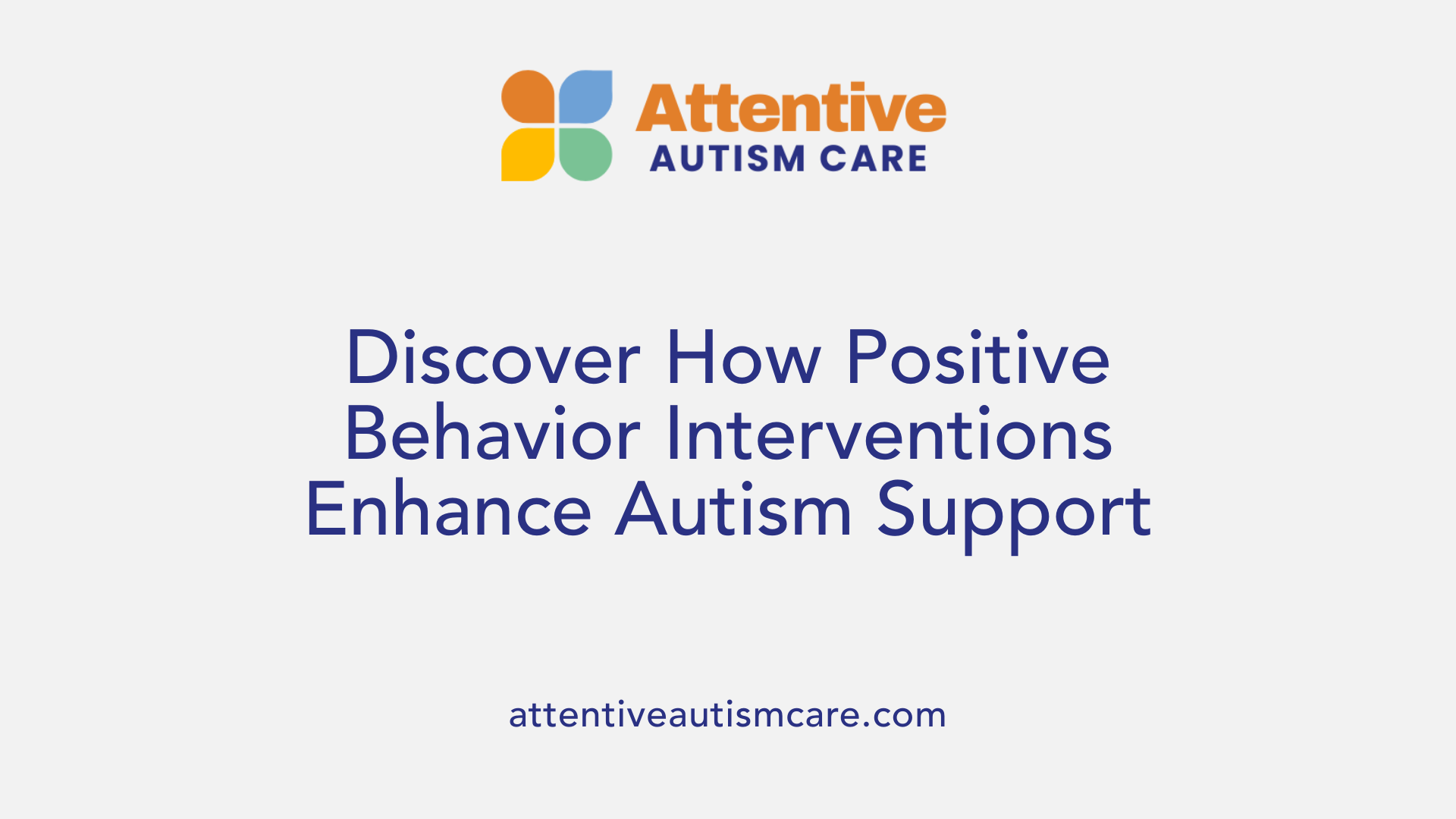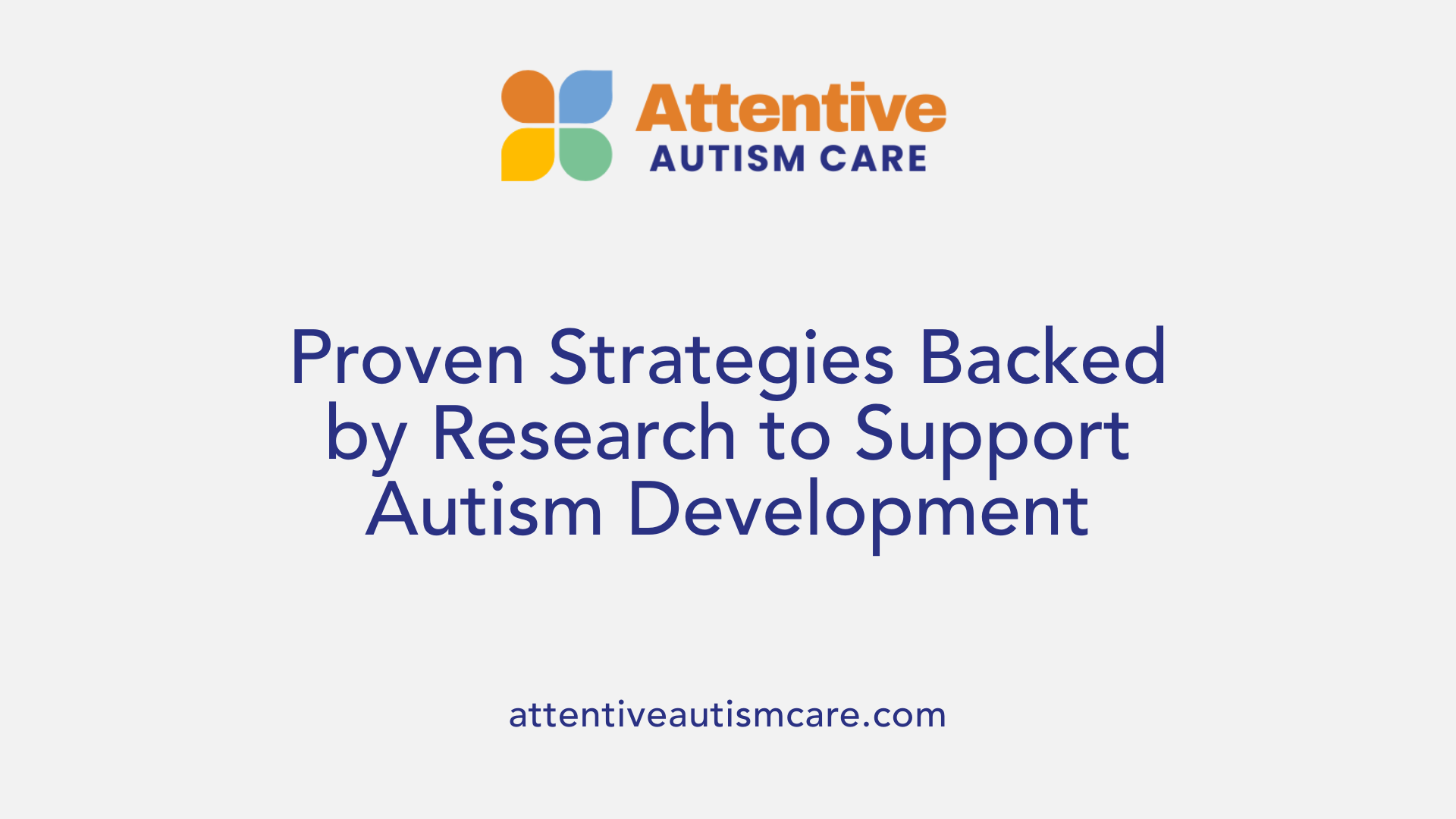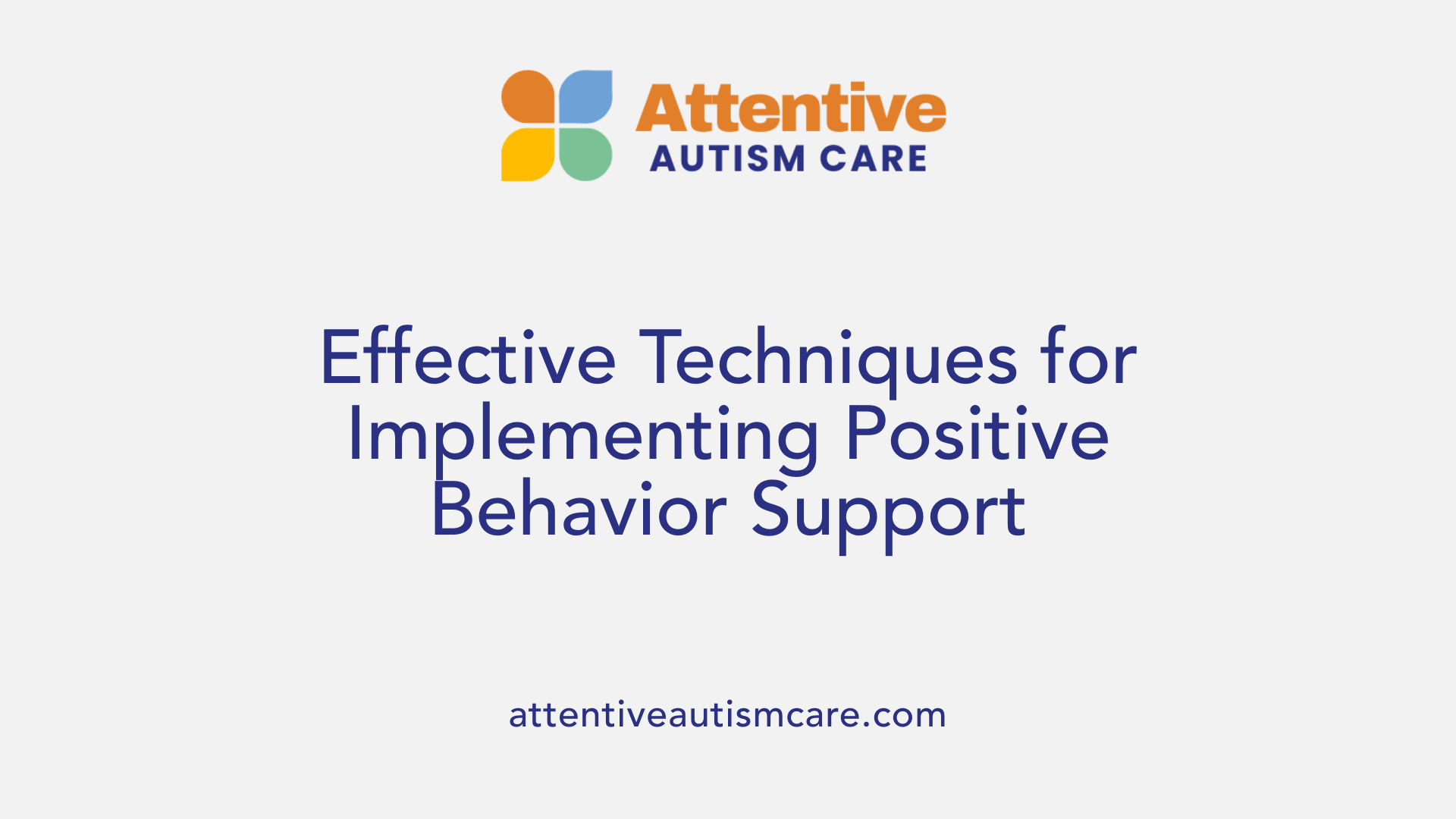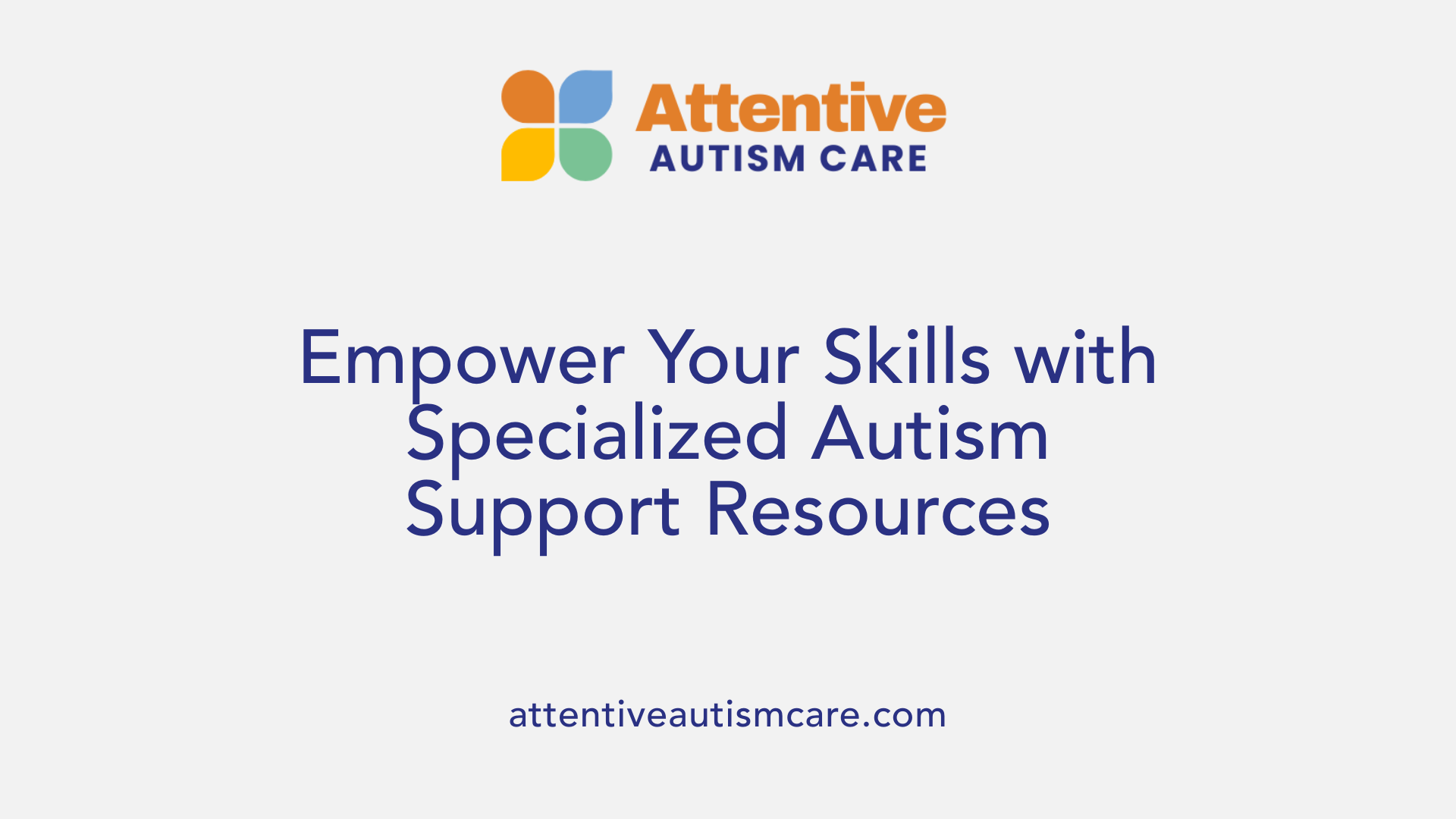How to Use Positive Behavior Interventions to Support Autism
Empowering Autism Support Through Positive Strategies

Introduction to Positive Behavior Interventions in Autism Support
Supporting individuals with autism requires a compassionate, evidence-based approach that emphasizes their strengths and promotes positive development. Positive Behavior Interventions (PBIs) are strategic techniques designed to reinforce desired behaviors while reducing challenging ones. Implemented correctly, PBIs foster social skills, emotional regulation, and independence, creating a supportive environment both at home and in educational settings.
Understanding Positive Behavior Interventions (PBIs) and Their Role in Autism Support

What are positive behavior interventions (PBIs) and how can they support individuals with autism?
Positive behavior interventions, often abbreviated as PBIs, are strategic methods used to encourage good behaviors while reducing challenging ones. These practices are rooted in evidence and focus on promoting skill development and emotional well-being. PBIs include a variety of techniques such as giving positive feedback when a child displays desired behaviors, using visual aids like schedules or pictures to clarify routines, and offering choices to foster autonomy.
Another essential aspect of PBIs involves teaching children self-regulation strategies, such as using a safe space or a calm-down area when they feel overwhelmed. They also emphasize understanding each child's unique needs through assessments like Functional Behavioral Assessment (FBA). This process helps identify what prompts problematic behaviors—whether it's seeking attention, sensory needs, or avoiding certain tasks—and then tailoring interventions accordingly.
Interventions like Applied Behavior Analysis (ABA) are fundamental components of PBIs, helping establish consistent routines and reinforcement systems that support adaptive behaviors. Naturalistic interventions, such as the Early Start Denver Model (ESDM), focus on integrating skill-building into everyday activities, making learning relevant and engaging.
Consistent application of PBIs across educational and home environments creates a supportive network for children with autism. This consistency fosters trust, helps reduce frustration, and encourages the development of positive social and communication skills. Ultimately, PBIs support individuals with autism by not only encouraging positive behaviors but also building independence, improving communication, and creating a more manageable daily experience.
Evidence-Based Strategies and Interventions for Autism Support

What are some evidence-based strategies for supporting individuals with autism using positive behavior approaches?
Supporting individuals with autism through proven positive behavior strategies involves a variety of approaches aimed at fostering growth, self-regulation, and social competence.
One of the most prominent methods is Applied Behavior Analysis (ABA), which uses systematic techniques to reinforce desired behaviors and reduce problematic ones. Variations like Discrete Trial Training (DTT) and Naturalistic Developmental Behavioral Interventions (NDBI) such as the Early Start Denver Model (ESDM) combine behavioral principles with developmental approaches, focusing on skills like communication, social interaction, and adaptive behaviors. These interventions are supported by extensive research and are most effective when implemented by trained professionals.
Visual supports are also crucial. Visual schedules, picture communication systems, and visual cues help children understand daily routines and expectations, which reduces anxiety and improves behavior. Clear, simple language and concrete instructions further aid comprehension.
Reinforcing strengths and offering choices within set boundaries promote autonomy and respect individual preferences. Giving children access to preferred activities or stim toys when appropriate supports sensory regulation and engagement.
Teaching social skills is vital. Techniques include modeling appropriate interactions, peer-mediated activities, and social skills training programs like Social Skills Training (SST). Emphasizing emotional awareness and regulation through calming spaces, validation of feelings, and teaching coping strategies enhances emotional resilience.
Family involvement is foundational. Parent-mediated interventions, such as P-ESDM, empower families to practice strategies consistently. Collaboration with professionals ensures that interventions are tailored to each child's needs, and ongoing training enhances staff effectiveness.
The combined use of these evidence-based strategies creates a supportive environment where children with autism can thrive socially, emotionally, and behaviorally.
| Strategy | Description | Supporting Evidence |
|---|---|---|
| ABA | Systematic reinforcement of desired behaviors | Strong, extensive research |
| Visual Schedules | Visual cues to structure routines | Widely used and effective |
| Strengths-Based Feedback | Celebrating successes and providing reinforcement | Promotes motivation and engagement |
| Choice Offering | Providing opportunities to select activities or items | Encourages autonomy |
| Social Skills Training | Enhancing peer interactions | Shows medium to large effects |
| Parent-Mediated Interventions | Training families to implement strategies | Leads to improved communication and behavior |
Incorporating these methods into daily routines, classrooms, and therapy sessions helps to support positive growth and reduce challenging behaviors, setting the foundation for lifelong skills.
Principles and Core Values of Positive Behavior Interventions in Autism Support

What are the key principles of positive behavior interventions in autism support?
Supporting children with autism involves understanding the reasons behind their behaviors and using strategies rooted in behavioral and developmental science. Central to this approach is the recognition that behaviors serve functions, such as seeking attention, gaining sensory input, or avoiding certain activities. Intervention strategies are designed to address these functions directly.
Applied Behavior Analysis (ABA) provides a systematic framework, emphasizing positive reinforcement to encourage desirable behaviors. This evidence-based method relies on collecting and analyzing data to guide decisions, ensuring interventions are tailored to each child's needs and progress. For example, using token systems or praise as rewards can motivate children to learn new skills.
In addition to ABA, integrated approaches like Naturalistic Developmental Behavioral Interventions (NDBI) and Pivotal Response Training (PRT) focus on engaging children in natural settings to promote social and communication skills. The Early Start Denver Model (ESDM) combines behavioral techniques with developmental principles, emphasizing social engagement and emotional connection.
Importantly, all interventions align with person-centered and dignity-respecting values. Positive Behavior Support (PBS), a widely used framework, emphasizes understanding each child’s environment and individual needs, avoiding punitive practices. The goal is to reduce challenging behaviors by making environmental changes and teaching new, functional skills.
Consistency, collaboration with families and professionals, and customization of strategies are essential. Rather than punishing behaviors, positive interventions aim to support development, promote autonomy, and respect each child’s unique preferences and abilities.
Implementing Positive Behavior Support Strategies Effectively

How can practitioners effectively implement positive behavior support strategies for individuals with autism?
To effectively support individuals with autism, practitioners should start with comprehensive assessments such as Functional Behavior Assessments (FBAs). These evaluations help identify the purposes or functions behind challenging behaviors, such as seeking attention, avoiding tasks, or sensory needs. Understanding these triggers allows for the development of personalized intervention plans that target the root causes rather than just the behaviors.
Creating tailored strategies involves employing visual supports like schedules, choice boards, and social stories. These tools clarify expectations, reduce anxiety, and promote independence. Environmental modifications, such as adjusting physical spaces or providing sensory-friendly items like noise-canceling headphones and fidget toys, help set the individual up for success.
Consistent use of reinforcement is essential. Positive feedback—praise, tokens, or access to preferred activities—encourages desired behaviors. Simultaneously, challenging behaviors that serve as communication can be ignored or redirected, so they lose their influence as a communication tool.
Building a respectful and trusting relationship is crucial. Practices such as active listening, validating feelings, and celebrating strengths foster a sense of pride and reduce emotional distress. This person-centered approach emphasizes dignity and respects individual differences.
Monitoring progress is vital to ensure interventions are effective. Regular data collection on behaviors and skill development allows practitioners to evaluate what is working and what needs adjustment. Adjustments are made in collaboration with families and other professionals to optimize support.
Integrated efforts across teams, including educators, therapists, and families, create a consistent environment that reinforces the goals. Training and ongoing professional development further enhance the ability to implement strategies effectively.
Overall, combining thorough assessments, tailored interventions, proactive supports, and continuous monitoring—while maintaining a respectful, person-centered philosophy—results in meaningful progress and positive experiences for individuals with autism.
Resources and Training for Caregivers and Educators
 There is a wealth of resources available to support caregivers and educators in implementing positive behavior interventions for individuals with autism. These include specialized training programs that focus on evidence-based practices, online courses, and detailed guides from organizations such as the Autism Society, the CDC, and the Center on PBIS. These resources offer practical strategies that can be integrated into everyday interactions, helping to create supportive environments.
There is a wealth of resources available to support caregivers and educators in implementing positive behavior interventions for individuals with autism. These include specialized training programs that focus on evidence-based practices, online courses, and detailed guides from organizations such as the Autism Society, the CDC, and the Center on PBIS. These resources offer practical strategies that can be integrated into everyday interactions, helping to create supportive environments.
Support from trained professionals, such as behavior analysts and educators experienced in Autism Spectrum Disorder interventions, plays a crucial role. They can provide personalized guidance, help interpret individual needs, and develop tailored intervention plans. Access to interventions like Applied Behavior Analysis (ABA), naturalistic teaching methods such as Pivotal Response Training, and assistive technologies widely enhance the effectiveness of behavioral support.
Visual and video modeling tools are particularly useful in teaching and reinforcing positive behaviors. These tools use simple, concrete visuals and demonstrations to help children understand expectations and learn new skills more easily. Customizing interventions based on each child's unique strengths, preferences, and challenges is essential for success.
Ongoing education and community involvement ensure that caregivers and educators stay current with the latest research and techniques. Community resources, including local support groups and online platforms, provide continuous learning opportunities and peer support. Such continuous professional development is vital for maintaining effective strategies that promote positive behaviors and foster growth.
These combined efforts—access to quality resources, professional support, tailored interventions, and community engagement—form a comprehensive approach to effectively support children with autism in various settings.
| Resource Type | Examples | Purpose |
|---|---|---|
| Training Programs | Autism Society courses, CDC workshops | Teach evidence-based strategies |
| Professional Support | Behavior analysts, trained educators | Customize and implement interventions |
| Visual/Video Tools | Video modeling, visual schedules | Aid comprehension and skill development |
| Community Resources | Support groups, online communities | Offer ongoing education and peer support |
Accessing these resources and training opportunities helps ensure that caregivers and educators are well-equipped to foster positive behaviors and support the developmental needs of children with autism.
Building a Supportive Framework for Success
Implementing positive behavior interventions for individuals with autism involves a comprehensive, person-centered approach that combines evidence-based strategies, collaboration, and ongoing assessment. By understanding the functions of behaviors, applying reinforcement thoughtfully, and creating supportive environments, caregivers and educators can foster meaningful progress. Resources and professional support are vital to ensure interventions are tailored, sustainable, and aligned with respectful practices that uphold the dignity and potential of every individual. Building this framework not only reduces frustration and challenging behaviors but also promotes confidence, autonomy, and social inclusion.
References
- Helpful strategies to promote positive behavior
- Supporting Students with Autism Spectrum Disorders ...
- Positive Behaviour Support (PBS)
- Behavioral Interventions for Autism Spectrum Disorder
- Positive Behavior Support Plans
- Intervention and Therapies
- Positive Behavior Supports in an Autism Classroom
- Positive behavior support: 6 steps to success | Autism ...
- Effective Classroom Strategies for Teaching Students with ...



































































































